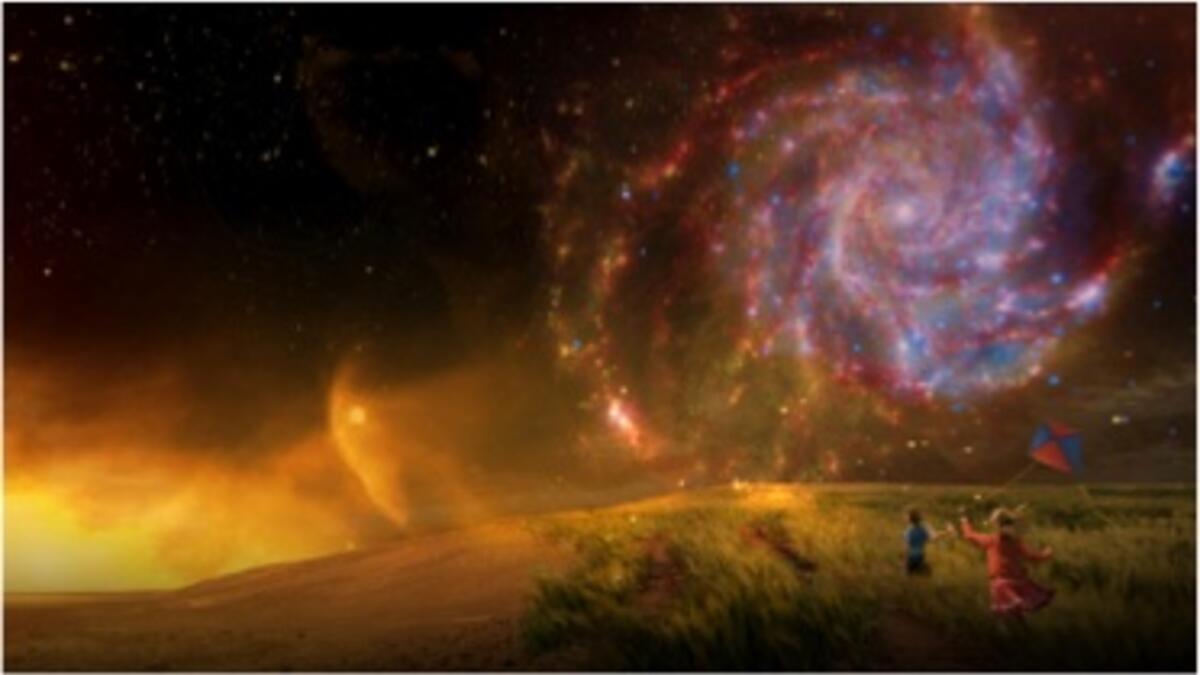ASU-led team awarded $5.7M NASA grant to predict range of rocky exoplanet compositions

Image courtesy NASA/NExSS
An interdisciplinary team of scientists led by Arizona State University has received a $5.7 million award from NASA's Nexus for Exoplanet System Science (NExSS) program to provide expertise on the design and operation of space telescopes designed to look for life on exoplanets.
“Learning whether life exists on other planets is one of the most profound questions there is. We’ve wondered for centuries, but this century, for the first time in history, humans are developing the technologies to actually answer that,” said Steve Desch, principal investigator of the project and professor in the School of Earth and Space Exploration.
Since 1995, thousands of exoplanets have been discovered around sun-like stars. Dozens are known to be Earth-like in mass and size and are presumably rocky planets with metal cores like Earth.
Observatories like the James Webb Space Telescope, or the planned Habitable Worlds Observatory (HWO), provide researchers the best opportunity to look for life outside the solar system, hopefully by measuring abundances of life-produced gasses in their atmospheres.
With this grant, the researchers will assess the geochemical cycles on their exterior layers to identify how many vital elements — carbon, nitrogen, sulfur, phosphorus, etc. — generally exist on their surfaces. The data will allow for future measurements to identify life and is the primary goal of the Tracing Rocky Exoplanet Compositions (TREC) team.
“Confidently identifying life on an exoplanet requires understanding its chemistry, but that depends on so many variables. Because we can’t simply pick up and examine an exoplanet rock like we would on Earth, our TREC team will use our experimental and theoretical toolbox to map out all the different ways rocky planets can manifest chemically,” said Cayman Unterborn, deputy principal investigator, former School of Earth and Space Exploration postdoctoral researcher and now a research scientist at Southwest Research Institute in San Antonio.
Predicting the surface compositions of planets light-years away is a challenge. Direct observations by the radial velocity technique (measuring the back-and-forth tug of the star by the planet) or the transit technique (measuring the amount of starlight blocked by the planet as it passes in front of it) yield only the mass and radius of an exoplanet.
From this, researchers know the average density, which is only enough to tell the makeup of a planet — rock and metal (like Earth), ice and rock, or mostly gas.
"The TREC team will start with measuring elements in exoplanet host stars. Earth is close in composition to the Sun, and exoplanets should be similar to their stars," said Desch. "But Earth does not appear to have formed proportionally as much carbon or other key elements as the sun. Moreover, many key elements it acquired are trapped in Earth's core or mantle and are not involved in geochemical cycles on Earth's surface."
The TREC team will use a combination of sophisticated models and laboratory measurements to understand how Earth and other rocky planets in our solar system formed, then apply those models to exoplanetary systems to determine how much or how little carbon, nitrogen, etc., can be on rocky exoplanet surfaces. The data collected will enable future searches for life on rocky exoplanets.
In addition to principal investigator Desch and deputy principal investigator Unterborn, the TREC team includes seven co-investigators from ASU (Kara Brugman, Hilairy Hartnett, Larry Nittler, Joe O'Rourke, Molly Simon, Christy Till, Patrick Young) and seven co-investigators or collaborators from other institutions (Brad Foley, Pennsylvania State University; Natalie Hinkel, Louisiana State University; Alan Jackson, Towson University; Stephen Kane, University of California, Riverside; Zachary Maas, Indiana University; Wendy Panero, National Science Foundation; and Aaron Wolf, SETI Institute). They bring expert knowledge across astronomy and astrophysics, geophysics and geochemistry, planetary science and meteoritics, exoplanets and education research.
NASA's NExSS program is a research coordination network within its Interdisciplinary Consortia for Astrobiology Research.
More Science and technology
Statewide initiative to speed transfer of ASU lab research to marketplace
A new initiative will help speed the time it takes for groundbreaking biomedical research at Arizona’s three public universities…

ASU research seeks solutions to challenges faced by middle-aged adults
Adults in midlife comprise a large percentage of the country’s population — 24 percent of Arizonans are between 45 and 65 years…

ASU research helps prevent substance abuse, mental health problems and more
Smoking rates among teenagers today are much lower than they were a generation ago, decreasing from 36% in the late 1990s to…